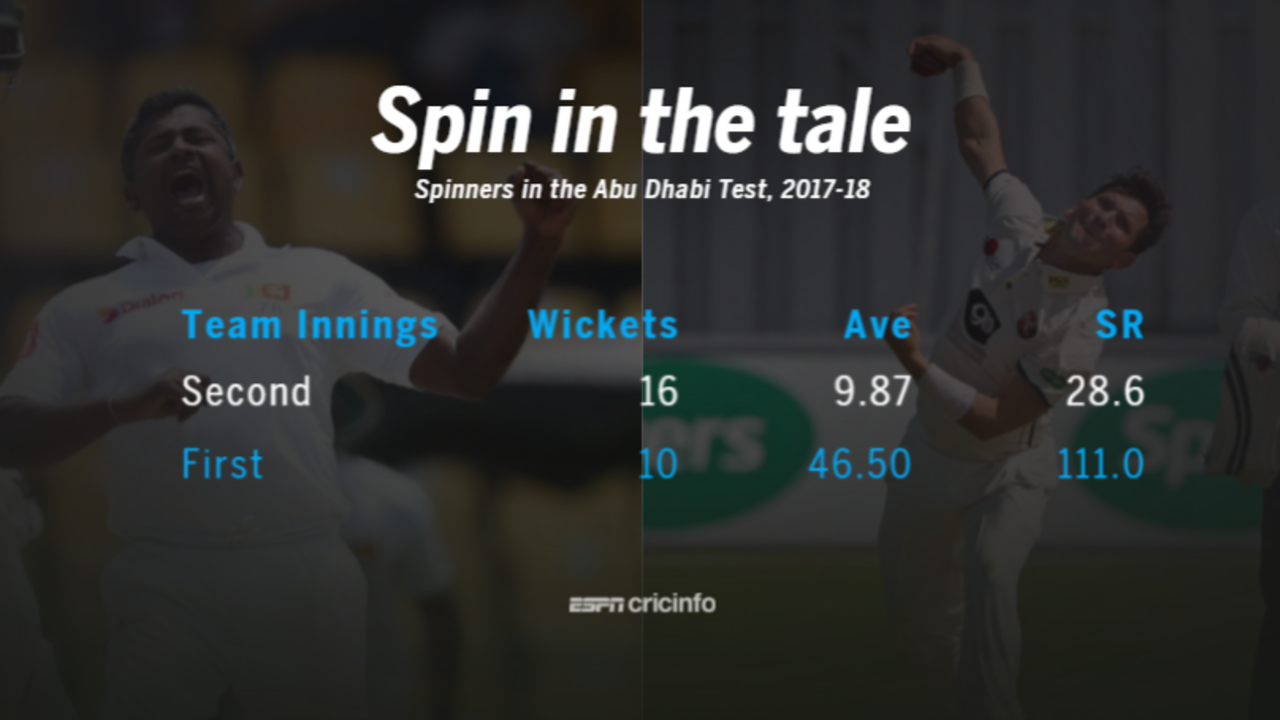Sri Lanka successfully defended
the smallest target they have ever set in Tests. This was thanks to Rangana Herath's 6 for 43, during the course of which he became the first left-arm spinner to take 400 Test wickets. Pakistan were bowled out for just 111 chasing 136 -
the lowest target they have failed to chase. Only once has a team lost - Australia at Headingley in 1981 - while chasing a lower target after scoring 400 plus in the first innings.
Sri Lanka, who made 419 in the first innings, also suffered a similar slump in the Test having been bowled out for 139. In other words, while the two teams managed a combined score of 852 runs for 20 wickets in the first innings, they lost 20 wickets in the process of scoring just 252 runs in the second innings. The 1951 Test between England and South Africa
at Headingley is the only other instance where both teams have been bowled out for under 200 after posting 400-plus runs in their first innings.
After four days of dull cricket, this match saw a frenetic fifth day when 15 wickets fell for just 183 runs. In Test matches scheduled over five days, this is just the tenth instance when 15 wickets have fallen on the fifth day. Among these 10 instances, 11.43, the average runs scored per wicket, in Abu Dhabi Test is the lowest.
This turnaround in the pace of the match though was brought about by the spinners' effectiveness. While Herath struck for Sri Lanka, Yasir Shah lit Pakistan's prospects with figures of 5 for 51 in the second innings, in the process becoming only the fifth legspinner to take five-fors in four successive Test matches (Richie Benaud, BS Chandrasekhar, Mushtaq Ahmed and Anil Kumble are the others to achieve this_ In all, spinners from both teams took 16 wickets at a combined average of just 9.87 in the second innings. This average of spinners in the second innings of the match is the second-lowest in Test history when they have taken at least 15 wickets. The only match that ranks higher is the Mumbai Test involving Australia in 2004-05 when the spinners took 17 wickets at an average of 9.52.
This Abu Dhabi Test, however, was different from most other matches owing to the contrast in spinners' numbers between the first and the second innings. In the first innings, spinners had taken 10 wickets at a modest average of 46.50. This difference of 36.65 in spinners' averages between the two innings is the second highest for any Test where spinners from both teams have a combined wickets tally of at least 10 wickets. The only match that ranks higher is the
Mumbai Test of 2011-12 involving West Indies. On that occasion though, a large part of the damage was done by the India spinners.
At the end, Sri Lanka ended up winning by 21 runs, the lowest run-margin they have won a Test match by. Their previous lowest too, incidentally, had come against Pakistan in Faisalabad (42-run win) in 1995. In terms of matches won by margin of runs, this has been one of the closest Tests in recent times. Only three other Tests in the last decade have ended with a lower win margin. New Zealand won the Hobart Test in 2011-12 by a margin of 7 runs and England had won 2013 Ashes Test at Trent Bridge by a margin of 14 runs. More recently, Bangladesh had beaten Australia by a margin of 20 runs in Mirpur.
